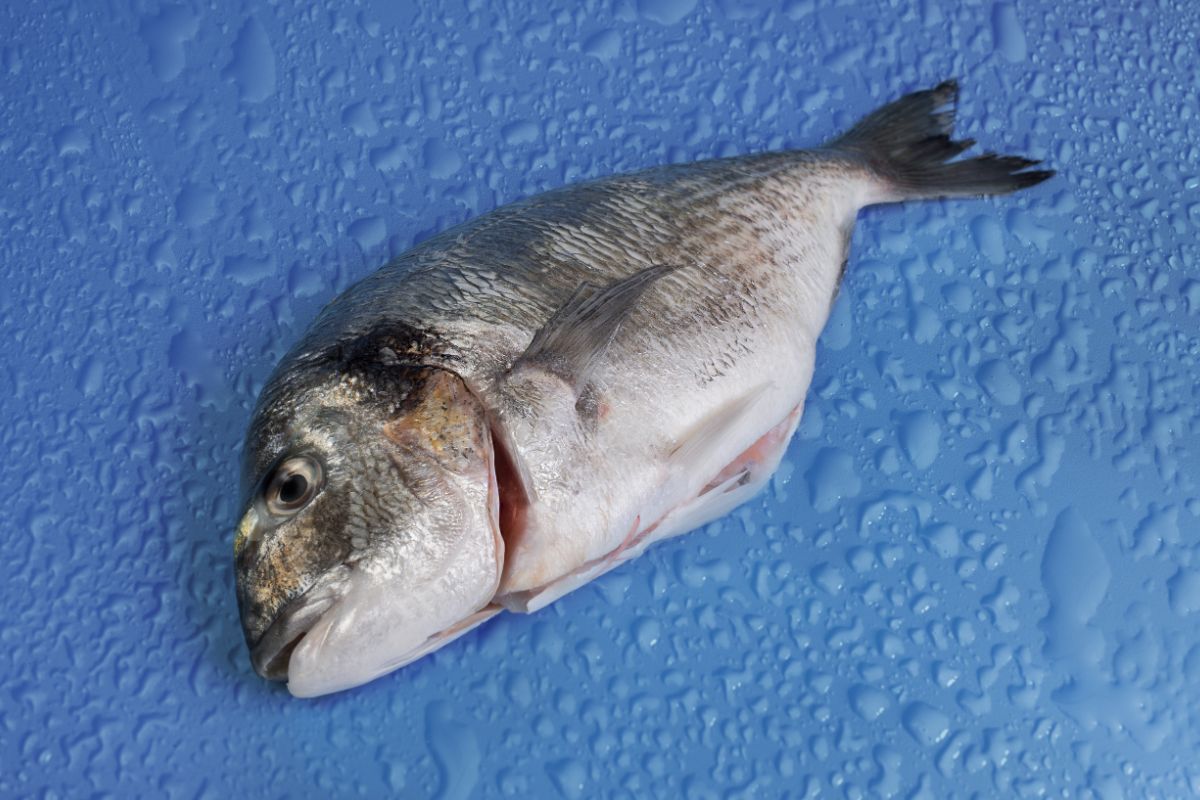Fish is a staple in most people’s diets because it is healthy and tasty and in most cases quite simple to cook. But when you are eating a lot of fish, it is important to know exactly how long you can keep it stored in the fridge before it goes bad.

When you eat spoiled fish, it can cause quite a lot of health problems, so it’s better to have the right information about storing it so you can avoid those problems!
If you don’t know how long fish can stay in the fridge, then you have come to the right place! In this article, you will find out everything you need to know about how long fish can stay in the fridge after it has thawed, as well as how to tell if the fish is spoiled! So let’s get started!
Exactly How Long Can Fish Stay In The Fridge After It’s Thawed?
In short, thawed fish can be stored in the fridge for no more than two days. If you leave it in the fridge any longer, you run the risk of it spoiling and you won’t be able to eat it.
Two days don’t sound like much time at all, but it’s always best to air on the side of caution rather than risking eating spoiled fish. This is why it’s in your best interest to only thaw fish you plan on eating right away, and keep the rest in the freezer until you are ready to eat it.
As soon as you decide to thaw your fish, it is recommended that you eat it as soon as possible, and while you can leave it for two days, it’s in your better interest to eat it on the first day.
Can You Refreeze Thawed Fish?
Once you have thawed your fish, it is advised that you never try and refreeze it. But this only applies to raw fish, so technically, you can refreeze thawed fish. But only if it’s cooked!
Cooked fish that has already been thawed can be refrozen once, but you need to make sure that it has completely cooled and then you can refreeze it for no more than three months. If your fish has been thawed and it is raw though, do not try and refreeze it!
The Safest Way To Thaw Fish
When it comes to thawing your fish, it is important that you do it in the safest way possible.
There are a couple of different methods you can use to thaw your fish, but if you think that leaving it on the kitchen counter is one of them, you might be surprised to learn that this is not actually a recommended method.
The first method that is most effective and safe is to put your frozen fish in the fridge and leave it there overnight. If you want to be extra careful, you can leave it in for an entire night rather than just while you sleep, but once it’s in the fridge, make sure you use it within 2 days.
The second method is for anyone who needs to thaw the fish a bit faster. For this method, you need to seal your fish in plastic and then cover it in a bowl of cold water.
Once you have done this, leave it in the water for 30 minutes and do this with each pound of fish. This method is only suggested if you have no other option, and you should always aim to use method one first.
How To Tell If Your Fish Is Spoiled?
There are a few ways you can tell if your fish is spoiled, but the easiest way to tell is by smelling it. Even spoiled, it will still smell like fish, but the tell-tale smell that it has gone off is that odor will be even more “fishy” and it will smell a bit sour or rancid.
It is a sort of smell that will just disagree with you and you will just know it has gone off. If you still aren’t sure though, you can also check the color of your fish.
Most raw fish is typically a white or light pink color, and when it starts to go off, the flesh on the fish will start to turn gray and it will develop a slimy, milky coating. If you see either of these signs, it’s in your best interest to dispose of the fish because it won’t be safe to eat.
Even just the slightest “off odor” or the slightest discoloration is enough for you to dispose of the fish. If you eat spoiled fish, you can get scombroid poisoning and ciguatera poisoning. Symptoms of scombroid poisoning include vomiting, hives, nausea, or pain in your abdomen.
As for ciguatera poisoning, some of the symptoms include watery diarrhea, headache, nausea, vomiting, and numbness around the mouth and limbs.
If you think you may have either scombroid poisoning or ciguatera poisoning, it is important that you contact your doctor to run a full diagnostic test and you should do this immediately.
Conclusion
It’s always in your best interest to follow the recommended guidelines when it comes to storing fish, so if you have any thawed fish in your fridge that has been there for longer than 2 days, dispose of it immediately.
If you ingest spoiled fish, you run the risk of getting scombroid poisoning and ciguatera poisoning, both of which are not pleasant to deal with. Remember, if you are even the slightest bit concerned that your fish has gone off but you aren’t sure, check the smell and the color.
If you still aren’t sure after that, dispose of it. It’s always better to be safe rather than sorry when it comes to fish, so follow the instructions and tips we have provided here and you should be able to avoid having to deal with any spoiled fish!
- How To Reheat A Cheesesteak - November 5, 2023
- What Are Three Must Have Kitchen Knives? - September 22, 2023
- How To Protect Edges Of Pie Crust - June 15, 2023








